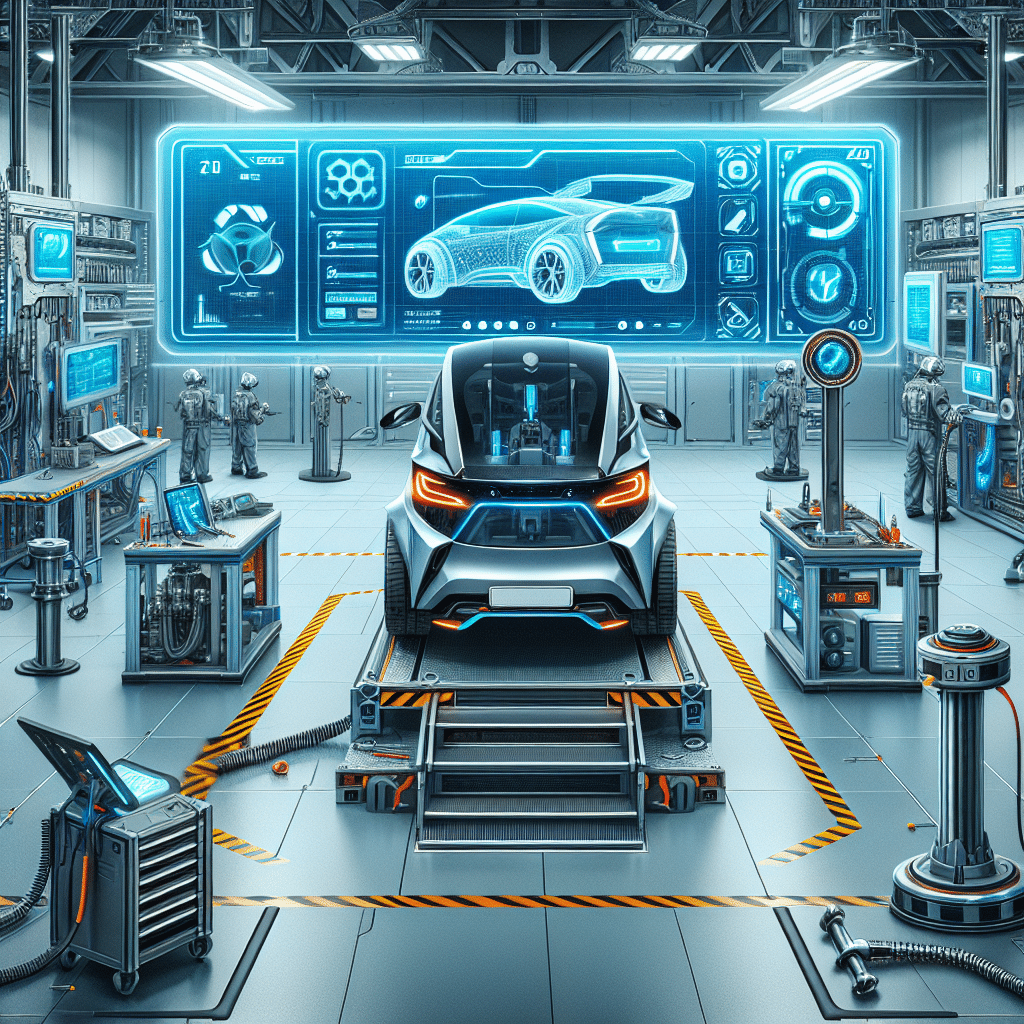1. Understanding Electric Vehicle Components
Understanding the components of an electric vehicle (EV) is crucial for effective maintenance. The main components that require regular checks include:
-
Battery: The heart of an EV, it’s important to keep the battery in optimal condition. This includes checking for leaks, ensuring connections are secure, and monitoring battery health through dedicated software.
-
Electric Motor: Unlike traditional vehicles, EVs have fewer moving parts. Still, the motor should be inspected for wear depending on usage patterns.
-
Regenerative Braking System: This system captures energy during braking, enhancing battery efficiency. Ensure that the brake fluid is at the proper level and that brake pads are checked regularly.
-
Charging System: Regularly inspect the onboard charging port and cable for any signs of damage, wear, or corrosion to avoid charging issues.
2. Regular Software Updates
Most modern EVs rely heavily on sophisticated software for performance and features. Regular software updates can enhance battery management, improve vehicle range, and fix any existing bugs. It’s advisable to:
-
Schedule updates as soon as they are available through the manufacturer or authorized service centers.
-
Regularly check for updates from the EV’s mobile app or dashboard.
-
Understand how updates can impact driving performance and safety features.
3. Battery Maintenance Practices
Battery health plays a pivotal role in the lifespan and performance of your EV. Effective maintenance can prolong battery life substantially:
-
Avoid Frequent Fast Charging: While convenient, frequent use of fast charging stations can degrade battery health over time. Opt for regular charging when possible.
-
Keep Battery Between 20%-80% Charge: Regularly depleting the battery to 0% or charging to 100% can shorten its lifespan. A balance maintains optimal functioning.
-
Temperature Control: Extreme temperatures can affect battery performance. Ensure that your vehicle’s thermal management system is functioning correctly to avoid overheating or freezing.
4. Tire Care and Maintenance
Tires are often overlooked but critical to EV performance and safety. Here’s how to keep them in top condition:
-
Regular Tire Pressure Checks: EVs are generally heavier due to the battery weight, which can result in uneven tire wear. Maintain the recommended PSI for optimal performance.
-
Rotate Tires Frequently: Change the position of the tires every 5,000-7,000 miles to ensure even wear.
-
Alignment and Balancing: Ensure your wheels are properly aligned and balanced to improve handling and tire life.
5. Brake System Maintenance
Brakes in an EV can last longer thanks to regenerative braking, but traditional brakes still require attention:
-
Monitor Brake Pads: Regularly check for wear and replace pads as necessary.
-
Fluid Checks: Ensure that the brake fluid is clean and at the appropriate level. Replace it according to the vehicle owner’s manual.
-
Conduct Brake System Alerts: Listen for unusual sounds when braking, and take immediate action if you notice anything out of the ordinary.
6. Cooling System Check
Battery and motor cooling systems are critical for maintaining optimal performance. Here’s what to do:
-
Coolant Levels: Regularly check coolant levels, as they can affect both the battery and motor’s temperature management systems.
-
Inspect for Leaks: Ensure there are no visible leaks around hoses and connectors which could compromise cooling efficiency.
-
Thermal Management System Functionality: Schedule regular diagnostics to monitor the thermal management system’s performance.
7. Inspections and Professional Services
While many maintenance tasks can be done independently, certain procedures require professional expertise:
-
Annual Inspections: Schedule a comprehensive inspection at least once a year at an authorized EV service center. This should include battery diagnostics, software updates, and physical component checks.
-
Check Warranties: Ensure that maintenance practices align with warranty requirements to avoid any issues when claims arise.
8. Vehicle Cleaning and Exterior Care
Keeping your EV looking pristine not only enhances aesthetics but also protects components:
-
Regular Washing: Clean the exterior regularly. This helps prevent corrosion on electric components and keeps paintwork intact.
-
Ceramic Coating: Consider applying a ceramic coating to protect the paint and enhance longevity against environmental elements.
-
Interior Care: Vacuum and shampoo the interior to maintain a clean, comfortable space and prevent wear.
9. Safety Equipment Checks
Safety features need regular checks to ensure a safe driving experience:
-
Ensure Functioning Lights: Regularly inspect headlights, taillights, and turn signals for functionality and replace burnt bulbs immediately.
-
Test Driver Assistance Features: Check and calibrate features such as lane assist and adaptive cruise control during service visits.
-
Emergency Equipment: Keep first-aid kits, reflective warning triangles, and tire inflators in the vehicle as part of regular safety checks.
10. Understanding Charging Infrastructure & Home Setup
An educated approach to charging can enhance your EV experience considerably:
-
Installation of Home Charging Station: Invest in a Level 2 charger for faster charging at home. Consult a licensed electrician to set it up safely.
-
Explore Public Charging Solutions: Familiarize yourself with local charging networks, apps, and rewards programs to optimize your charging experience while on the road.
-
Plan Long Trips: Use route planning tools that consider charging station locations along the route, predicting stops and ensuring you remain charged.
Adhering to these best practices not only enhances the longevity of your EV but also ensures optimal performance, safety, and reliability in the years to come. Staying informed about advancements in EV technology and maintenance techniques will empower you to make the best decisions for your electric vehicle.
